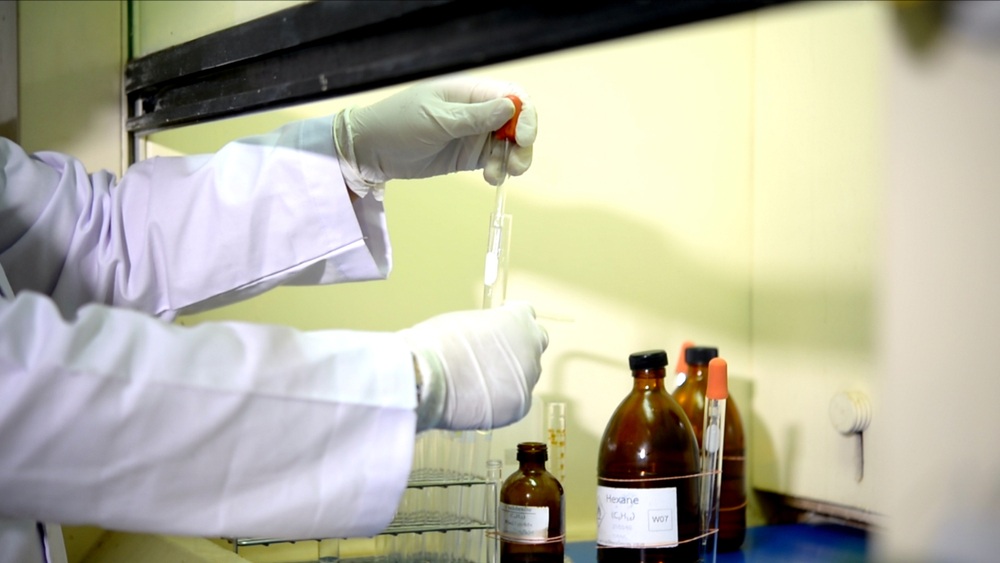S.E.P.S. has provided Tri-State area labs with fume hood certification for years. Of course, our numerous techniques ensure your unit (and consequently, your lab) operates efficiently and maintains safety. In addition, every industry veteran understands that fume hoods are an essential part of any modern lab.
So what exactly are fume hoods, and why are they so important?
In labs that work with particularly harmful chemicals and vapors, they’re critical to keeping employees safe. Obviously, nowadays, with COVID-19 still being a prevalent issue, they’ve never been more important. Much like biosafety and cleanroom services, S.E.P.S. and our fume hood services are all about keeping labs running smoothly and keeping personnel safe.
Fume Hoods: Ventilation & Containment
Basically, the main purpose of a fume hood is to prevent inhalation of toxic chemicals and vapors. It is an enclosed space in which to handle dangerous materials. In addition, it features a ventilation and exhaust system that removes the fumes. Without a fan or filter unit to drive hazardous vapors out, lab personnel can inhale them. Of course, this causes toxins to enter the bloodstream.
Toxins entering the bloodstream usually have serious medical consequences. The fume hood is a reliable tool that can prevent dangerous scenarios from occurring. It uses an exhaust system to drive the chemicals out of the laboratory.
Most fume hoods also have a clear sliding window (called a sash) that acts as a barrier between the worker and the harmful substance. In the event of an accident or chemical spill, there’s no exposure to the hazardous chemical. As long as the worker is wearing the most basic of personal protective equipment, like gloves, they can avoid skin absorption of the chemical.
Fume hoods also have a “lip” that catches any of the liquid spilled within. This way, the fume hoods contains the liquid and prevents it from infiltrating anywhere else in the lab.
Types of Fume Hoods
Fume hoods come in different designs for different operations. Regardless of type, airflow velocity tests and ANSI/ASRAE 110 testing is vital.
Ductless Fume Hoods
A ductless fume hood relies on a carbon filter to remove toxic fumes from the workspace. Also, it’s a more eco-friendly version of the fume hood. Rather than directing the fumes outside of the building, the carbon filter removes the chemicals from the air and redirects it back into the lab. Industry experts consider ductless fume hoods the most energy and cost-efficient.
Chemical Fume Hood
These are for labs that regularly handle dangerous chemicals. They feature the clear sash so that workers can have a complete view of the substances they’re working with without coming into direct contact with them.
ADA Fume Hoods
Manufacturers engineer these to comply with the A.D.A. (Americans with Disabilities Act) standards to ensure any employee can have access to and operate it.
Canopy Fume Hood
Interestingly, you won’t find these hoods exclusively in labs. They are ventilation systems in use in many professional kitchens, as well. For instance, you can always locate them directly above stoves or ovens. Using a fan, they remove excessive heat or steam from the work area.
Perchloric Acid Fume Hood
This fume hood is exclusively for labs working with perchloric acid. The essential function is to prevent the formation of perchloric salt. They use a specific grade of steel to prevent any damage from the acid and maintain sterile conditions.
Variable Air Fume Hood
A variable air fume hood is a device with a greater deal of control over the air which the unit exhausts. They feature luminous, ultra-modern interior lighting systems. And, they’re generally more cost-efficient.
Most of the fume hoods’ airflow stops as their sashes are adjusted. Variable air fume hoods have a constant airflow, regardless of the sash position.
Walk-In Fume Hoods
These fume hoods are generally used in labs that handle larger materials. Since fumes are filtered out, workers can handle substances with harmful vapors while standing in the unit.
In addition, many labs with walk-in fume hoods will use them to store instruments and accessories.
Guidelines
Depending on lab size and workload, some will need a second or even third fume hood. It is extremely important to make sure your fume hood is installed correctly and the exhaust is working. SEPS uses multiple tests to verify the efficiency of fume hoods and can also ensure proper decontamination.
Additionally, many fume hoods have airflow monitors. Regularly check the monitor’s status to ensure the fume hood is operating properly.
Even though fume hoods provide protection from harmful substances, it’s still important to wear adequate protective equipment while using them. Bare hands should never enter a fume hood and skin should never be exposed.
Conclusion
Fume hoods are effective ways to keep lab personnel safe and preventing contamination. They can be found in many different settings and in different fields. Food science and research, pharmaceutical sciences, and biosafety labs are just a few of the facilities in which fume hoods are essential.
S.E.P.S. can help you ensure your fume hood is operating efficiently, and most importantly, keep your employees safe. We will test and certify your fume hood in any lab within the Tri-State area.
